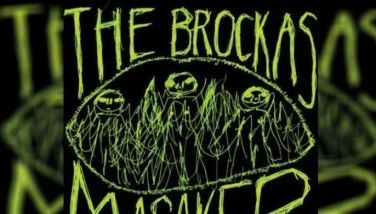Oldman in survival mode in Apes
MANILA, Philippines - Revolutionary duo WETA Digital and Andy Serkis, who gave us the groundbreaking effects of motion capture, are back once again on the big screen in Dawn of the Planet of the Apes. The previously released Rise of the Planet of the Apes, an arresting story, launched a new franchise and became a global hit grossing nearly $500M and receiving critical and audience acclaim. It was the first live-action motion picture to star and be told from the point of view of a sentient animal Caesar, a character with human qualities and with whom moviegoers experienced a real emotional bond.
In Dawn of the Planet of the Apes, Caesar’s principal human contact is Malcolm, portrayed by Jason Clarke. Malcolm is a former architect who lost his wife to the virus that wiped out most of humanity. Left on his own to raise his teenage son, Malcolm is desperate to maintain the hope and stability he and Alexander have found within a small colony of fellow survivors in San Francisco.
While Malcolm is a pivotal figure in the human colony, its leader is Dreyfus, played by Gary Oldman. Prior to the breakdown of society, Dreyfus was a law enforcement professional. Now, he has taken on the role of a leader of the human colony surviving among the ruins of downtown San Francisco — an authority figure intent on not only saving, but rebuilding what’s left of mankind a decade after the Simian Flu destroyed human-run infrastructure. Oldman describes the colony as “a melting pot of survivors. The virus has just wiped out millions and millions of people. We are just the lucky few that were genetically predisposed to have been immune. As a community, we’ve come together and we’re trying to survive and restore our world.â€
Oldman says of his character, “I think he’s quite a heroic character. I guess you could call him the leader. Matt and I talked about what he may have done locally in the community — by locally, I mean San Francisco. He was probably a policeman or something. So they are the sort of go-to people. He’s resourceful. He’s that sort of guy who is a designated leader. There’s no ego in that way. But he’s got very personal baggage that he carries. And not all things are relative. We went through the epidemic and then the subsequent rioting and post-apocalyptic chaos. Then if you survived the disease and then you’re immune to the disease and you survive the other stuff, I think why put that at risk? That’s where he’s coming from.â€
Such realism is further enhanced by the production’s ability to shoot in exterior locations. More than 85 percent of the movie was shot in the forests of Vancouver and outside New Orleans. Serkis calls this a “huge technical leap that enables there to be no disconnect with the other actors.â€
Additionally, Oldman describes the movie’s technology as having leapt a hundredfold, “Well, he’s basically revolutionized the art form with this. What they’ve achieved in this movie is in its own way as miraculous as (the achievement of) Alfonso Cuaron with Gravity. What he’s done is he’s taken motion capture and 3D onto location. And then used natural light, one source directional lighting, long lenses, all the things that you would use on a regular movie or a more conventional movie or a not heavy-FX film and applied it to this. So he’s taken all those sort of old techniques and applied them to new technology. And I’ve seen a cut of the movie with people running around in grey uniforms and pixels hardly rendered, and even in this condition I was totally lost in the story. I think he’s done something very new here. And more than that, I said, “I can’t believe what I’m watching. I mean they look like real gorillas!†I don’t know what they did since the last movie, but the technology has come on a hundredfold.â€
Dawn of the Planet of the Apes opens July 9 in theaters nationwide.
- Latest
- Trending





























